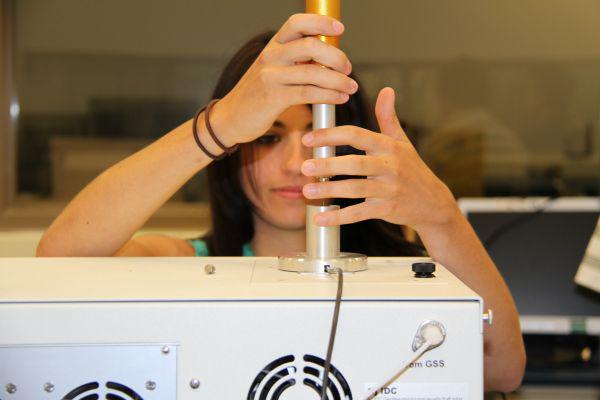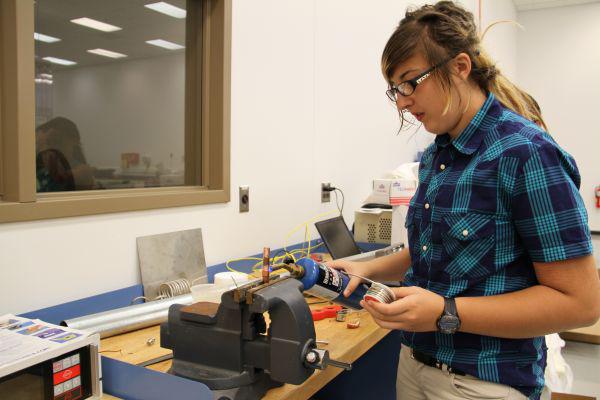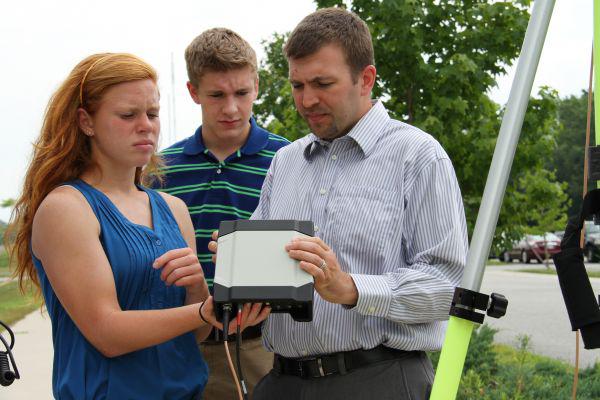From CERDEC's Outreach Program STEMs a New Generation of Scientists
For two decades, CERDEC’s Outreach Program has offered a host of courses to get students, from elementary- through college-aged, excited about careers in science, technology, engineering and mathematics.
College students of today are studying for jobs that have yet to be conceived—an insight into the rapidity at which fields of science, technology, engineering and mathematics are transforming.
“The kids in school now, the jobs they’ll be doing in five years haven’t been invented yet,” says Erica Bertoli, Outreach coordinator at the Army’s Communications-Electronics Research, Development and Engineering Center (CERDEC) in Maryland.
For two decades, CERDEC’s Outreach Program has offered a host of courses to get students, from elementary- through college-aged, excited about careers in science, technology, engineering and mathematics (STEM). “They get to meet the engineers, come into the lab, and it helps them see firsthand the fun and creativity they can find in STEM,” Bertoli says.
The Aberdeen Proving Ground Real-World Internships in Science and Engineering (RISE) program, for example, provides a two-week, in-lab environment for 11th graders, and coordinators ended last week their summer camp at the Maryland center for high schoolers.
“Something that surprised me about working with the engineers is how passionate they are about what they do and what kind of stuff they actually work on and how hard it is,” Adis, a student from Joppatowne High School, says in a statement. “Working in that lab situation got me more interested in the whole cyber field because there are a lot of cool things that go on that you don’t normally see.”
Students can attend a four-part leadership series to identify and develop skills needed for careers that pique their interests. “I’m hoping to get more life experience—understand the workplace and better understand how I’m going to fit into the world,” says Dilan, a student from Edgewood High School.
“The RISE students are an untapped resource in our national need for a growing science and engineering workforce,” CERDEC Deputy Director Robert Zanzalari says in a statement. “They have an interest in STEM but haven’t had the chance to really pursue it. Having built careers in science and technology, it’s our responsibility to show the next generation the possibilities and benefits a career in STEM can provide.”
Despite the positive shifts STEM education, however, U.S. students’ aptitude for and interest in STEM fields has remained flat for more than a decade, according to a U.S. News/Raytheon STEM Index study released in April.
“Just using the government’s data, which is quite a conservative estimate, it’s clear that STEM is an important and growing part of the economy,” says U.S. News & World Report editor and chief content officer Brian Kelly. “Beyond that, we know that STEM skills may be required in as many as 50 percent of future jobs.”
Notable changes over the past decade have contributed toward an institutional shift to make STEM topics more appealing, Bertoli says. “The students we’re serving now are all digital natives. For them, there was not a time before the Internet. The idea that we couldn’t Google something is horrifying,” Bertoli jests. But because of the comfort students today have with technology, they aren’t frightened or intimidated by it. “They aren’t afraid to push buttons and see what happens.”
Another marked difference is the way STEM students are treated. “We’ve moved away from a place where students who studied science and engineering and math weren’t expected to be well versed in anything else,” she says. “It wasn’t essential to be an engineer and an outstanding writer.”
Today, the chasm between studies in liberal arts and the sciences is narrowing, and students are expected to be more versatile. “If you can’t talk your idea, you’re not going to get anywhere.”







Comments